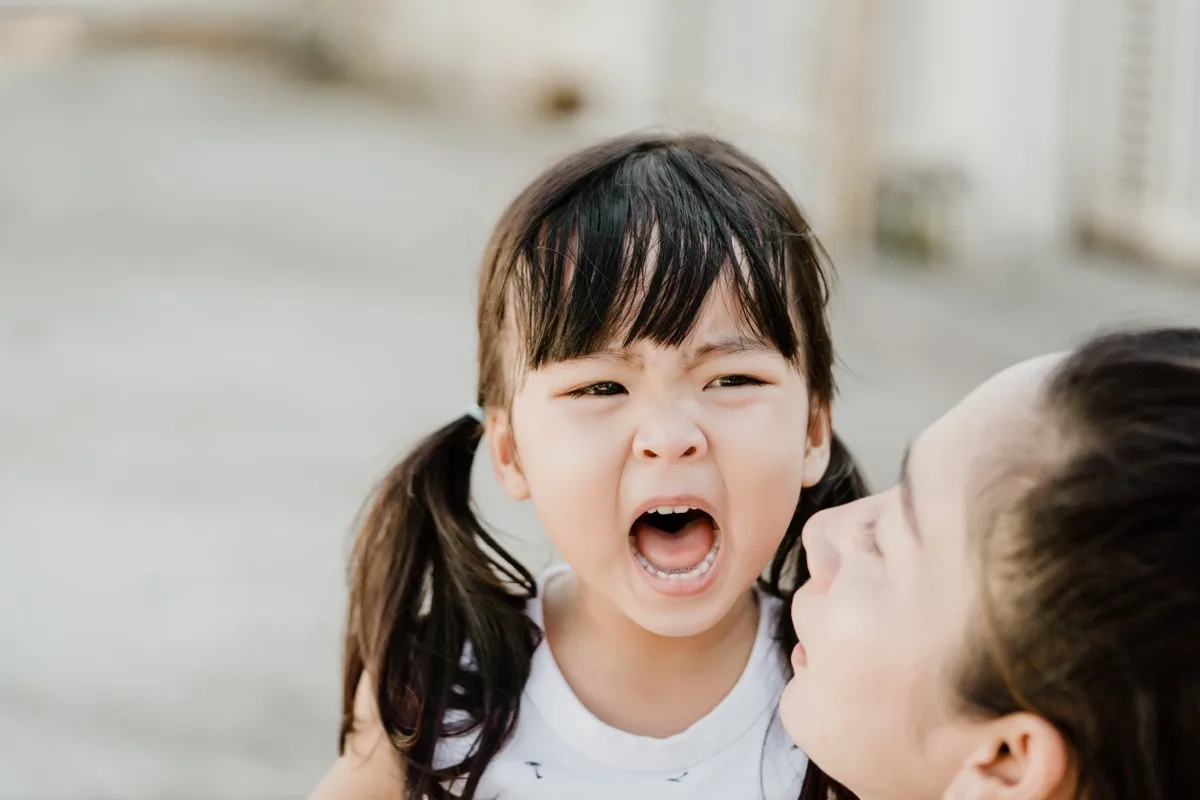
If you have a new prince or princess in your family, you’re probably busy showering the baby with all the love and kisses. You made the promise to be there forever and ever and never to let them down. That’s called attachment parenting. But is it good?
It’s normal to be insecure about your parenting style in these early days, but we can assure you that being present for your little one is always the right thing.
Here’s everything you need to know about the many child-parent attachment styles and the original attachment philosophy they have been developed from.
In this article
- What Is Attachment Parenting?
- The Origins/Roots of Attachment Parenting
- Attachment Parenting Style Principles
- Create a Balance Between Personal & Family Life
- Reinforce Positive Behavior
- Be Present Constantly
- Adopt Nighttime Parenting
- Be Sensitive
- Maximize Nurturing Touches
- Build a Bond With Breastfeeding
- Prepare for the Whole Parenting Process
- How Attachment Parenting Reflects on Children
- It Helps Them Explore the World
- Helps Build Their Emotional Resilience
- Enhances Cognitive Development
- Better Response to Stressful Situations
- They Aren’t Afraid to Share Thoughts and Feelings With Parents
- Potential Side-Effects of Attachment Parenting

Attachment parenting is a relatively new parenting style that’s been around for centuries. What do we mean by that? Well, if you had a happy childhood and you’ve always been able to form healthy adult relationships, it’s very likely that your mom and dad were attachment parents. Only they didn’t have a name for it. They called it love, care, and devotion.
There are many different types of attachment parents, but all of them believe in physical touch and emotional closeness as a way of responding to a child’s needs.
You might have heard about the 5 Bs of attachment parenting: birth-bonding, breastfeeding, baby-wearing, bed-sharing, and being responsive to the baby.
According to science, attachment parenting is one of the best ways to raise confident, independent, and self-reliant people. It sounds contradictory, but studies have proved time and time again that a supportive and emotionally available parent makes a child feel safe and accepted. A child that isn’t afraid and alone grows up to become a grounded individual.
As mentioned before, attachment parenting is very old. In every time and epoch, regardless of their belief systems, there were always parents who practiced attachment intuitively. However, this parenting style didn’t become official until the 1980s in the US.
The parents of the attachment style are an American pediatrician and his wife, William and Martha Sears. Their principles probably wouldn’t exist without the attachment theory that was developed some twenty years earlier by John Bowlby and Mary Ainsworth. These two psychotherapists are now known as the godparents of the attachment parenting style.
Both the parenting style and the psychological theory share a belief that children need caring and attentive parents to develop into healthy adults with no insecurities. The parent-child bond is the original relationship that we copy throughout our lives.

Originally, there were only 5 basic principles of the attachment theory, but as more parents started to adopt Sears’ vision during the 2000s, the list expanded to the 7 Bs of attachment parenting. Since then, at least one more principal has been added to the list.
Today, there are 8 principles of attachment parenting style:
Attachment parenting could feel straining at times. We have to be honest here – being 100% present with a baby is a huge sacrifice. Until the child is big enough to give love back, you need to find other sources of energy, or it will take a mental and emotional toll.
In other words, learning to find the balance is key. While caring for your baby, you need someone to take good care of you and cheer you up after a sleepless night. If you are too tired, you cannot fully commit to your child and be emotionally present all the time.
Good behavior is taught by example, and children know only what you teach them. So when your child misbehaves, that’s because it is two years old and doesn’t know better. As a parent, it’s up to you to keep your cool and approach your child with sense and reason.
Once more, balance is crucial. This time, you’ll need to find a fine line between being too permissive and being too harsh. To reinforce positive behavior, address your child with respect and don’t hurt her dignity. Explain what she did wrong and offer a better way.
Most parenting styles rely on this basic principle – never leave your child alone when it’s hurt or scared. Children cry because they need our attention. By refusing to respond, we tell them the world is cruel and unaccepting when you’re vulnerable.
Attachment parenting teaches the opposite of that. If you are a present force in your child’s life and you instill a sense of right and wrong, your child will grow fearless and have a strong inner compass. It will not be fearful of others or afraid to show love and empathy.
Co-sleeping is one of the most recognizable principles of attachment parenting. But is it okay if your baby sleeps with you in your bed? Is it safe? Every new parent has this dilemma. Some believe that bed-sharing creates an unhealthy and co-dependent relationship.
Many scientific studies have proved this wrong. However, sharing a bed with a small baby could potentially be dangerous if you don’t take the necessary measures. Creating a safe space next to you will make night fears disappear and help a toddler sleep better.

Brace yourself: we need to talk about tantrums. Sooner or later, every toddler will have them, some more often than others. There are many right ways to manage them, and only one wrong. Yep, anger. A tantrum-prone child – every child – craves sensitivity and compassion.
The only way to respond to a child in the heat of a tantrum is by acknowledging her emotions and insecurities. If you can’t get through to her, you must stay calm and show love – it will help center her emotions instantly and in the long run. Soon, tantrums will stop.
Physical touch is so comforting. Cuddling, hugging, and kissing will not spoil your child, as older generations wrongly believed. On the contrary, it will only help your child feel loved and secure and teach her that showing emotions is one of the greatest joys in life.
Formally, attachment parenting advocates physical touch from the first moment with the baby. Many nurseries practice so-called skin-on-skin contact immediately after birth. Breastfeeding and baby carrying, both in arms and baby carriers, are the extension of this.
Breastfeeding has become a polarizing topic, but it’s really simple. According to Bowlby’s attachment theory, and many others, it is the healthiest way to feed your child. In addition to irrefutable health benefits, breastfeeding is also crucial from a developmental standpoint.
That said, breastfeeding is still a choice. It’s a decision that every mom makes for herself and her child. If you can’t or don’t want to breastfeed for any reason, that will in no way cripple your child as long as you continue to practice skin-on-skin contact while bottle feeding.
Decisions, decisions. It’s absolutely true that new parents have a lot to think about, but the good news is that you don’t have to make all the decisions right now. The only thing that you have to do is explore what’s out there and educate yourself about your options.
Some of the questions you might want to address while expecting are in relation to giving birth and immediate aftercare. Anything more than that will feel too overwhelming, but if you have a lot of free time, read a few books on different parenting philosophies.

Let’s get one thing straight: parenting is never easy. However, secure attachment parenting tends to be less chaotic. It compels parents to quiet down and listen to their children, be respectful of their emotions, and in tune with their deepest fears. And that works.
It’s only natural that love and devotion have a positive effect:
When you observe your child closely, you can accurately determine their boundaries. It’s of great help, as it allows you to relax knowing that your child can explore the world safely. This freedom is a key difference from helicopter parenting.
Many psychotherapists, including Jordan Peterson, speak openly about the importance of physical touch and emotional responsiveness during the child’s formative years. Countless real-life examples show that non-attachment leads to dependency and addiction.
Multiple studies have found that children raised by the principles of attachment-style parenting grow up to be intelligent individuals. They show exceptional results in IQ tests and in terms of communicating and developing new skills.
Touch regulates levels of cortisol in our blood. It’s no wonder that babies who receive a lot of skin-to-skin contact, as well as toddlers who are regularly kissed and cuddled, have a better stress response. That might hold the key to our global anxiety crisis.
Attachment parenting helps create an authentic bond between a child and their parents based on mutual respect and trust. Since these children’s emotions are always met with genuine interest and compassion, they have no problem confiding in their parents.
Of course, every relationship has its ups and downs, and attached families are no exception. When your child comes of age, some trust issues will certainly arise. You can rely on parental control apps like Wondershare FamiSafe to keep your teens protected.

Like every other decision we must make as parents, attachment parenting has its pros and cons. As you’ll see in a minute, there are far more positive than negative sides to this parenting philosophy. Attached parenting is deeply human, and it’s human to err.
Besides, knowing the downsides helps you prevent them:
Many people describe the early experience of being a parent as a complete loss of identity. That is especially true when you are an attached parent. When you are completely committed to another human being, there’s little, if anything, left for yourself.
If you take a night off to sleep or see your friends or sit on the couch doing nothing, does that make you a selfish parent? Absolutely no! You must keep your own sanity and positive mindset to be able to show up whenever the little one needs you.
When you become a parent, there’s nothing scarier than reading about SIDS. The Sudden Infant Death Syndrome happens for no apparent reason, but some factors increase the risk of SIDS. One of them is when a baby sleeps in an adult’s bed.
Don’t worry; attached parenting is in no direct correlation with SIDS. However, it is one of the biggest propagators of co-sleeping, which could be dangerous while the child is still very young. Removing all pillows and loose bedding will make your bed safer.
When a child is overly attached to one parent, that’s usually the result of the other parent’s neglect or unhealthy attachment parenting forced by one of the parents. If the child has two parents, both must be willing to participate in attached parenting.
Another problem is caused by the fact that today’s children are used to multiple caregivers outside of their nuclear family – in socio-economic environments where both moms and dads must work double shifts, much of the parenting is done by the extended family.
If you’re interested in learning more about this philosophy, there are many attachment parenting books that can help you understand it better. “The Attachment Parenting” by William Sears is the original guidebook, but there are many other good ones.
An important thing to remember is that nobody is perfect when it comes to parenting. Likewise, no parenting theory is fully applicable to every family. So, you can adopt all eight principles of attachment parenting – or you can simply decide never to stop hugging your child.
